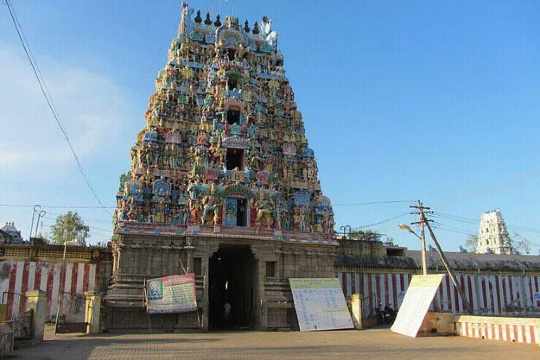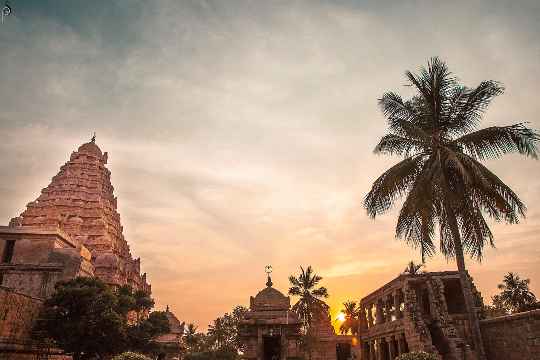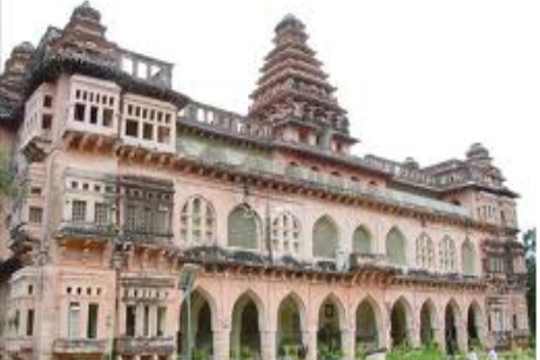Thanjavur Travel Guide
Uncovering the Cultural Riches of Thanjavur: A Travel Guide
Thanjavur, also known as Tanjore, is a city located in the state of Tamil Nadu, India. It is known for its rich cultural heritage, particularly its association with the famous Brihadeeswarar Temple, which is a UNESCO World Heritage Site and one of the most important temples in South India. The city is also known for its beautiful art and architecture, making it a perfect destination for those looking for a holiday that combines culture and history.
One of the main highlights of Thanjavur is the Brihadeeswarar Temple, which is a beautiful architectural masterpiece, built in the 11th century. The temple is known for its intricate carvings and sculptures, and is considered one of the most important pilgrimage sites in South India. Visitors can take a tour of the temple and learn about the history and significance of the site.
Another popular destination in Thanjavur is the Thanjavur Palace, which is a beautiful palace built in the 16th century and is known for its beautiful architecture and art. Visitors can take a tour of the palace and learn about the history and significance of the site.
For those interested in art and culture, Thanjavur offers a number of art galleries and museums such as the Thanjavur Art Gallery and the Sangeetha Mahal, which is a museum dedicated to the art of music.
Overall, a holiday in Thanjavur offers an opportunity to discover the rich cultural heritage and history of the city, and the beautiful art and architecture of the city. Visitors can also explore the beautiful temples, such as the Brihadeeswarar Temple and the Thanjavur Palace, and take a tour of the art galleries and museums such as the Thanjavur Art Gallery and the Sangeetha Mahal. With its rich heritage, beautiful art, and cultural atmosphere, Thanjavur is a perfect destination for a holiday that combines culture and history.
Speak to someone
who's been there

+91-9873003099
MAKE AN ENQUIRYBest Places To Visit In Thanjavur
From historical cities to natural wonders, come see the best of Thanjavur.

Alangudi Guru Temple
Alangudi and its temple are famous for being a holy site surrounded by three holy rivers Kaveri, Kolidam, and Vennaru. The place and the temple are closely intertwined with each other and some historical, mythological and local folklore is associated with its past origins and present legend. The Alangudi Guru Temple is dedicated to the Abtasahayasvara form of Shiva - who ingested the poison of Vasuki Nag to save humanity from its venom during the churning of the ocean. It also has his female counterpart Ilavarkuzhali and some other deities.

Brihadeshwara Temple
The Brihadeshwara Temple - or the Bada Mandir is a classic example of Chola architecture. It was built by the great Chola emperor Raja Chola I in the 10th century. The 65-meter-tall, 14-tiered pyramid-shaped plane rises from a square base and is topped by a massive monolithic dome carved from blocks of 81 tons of granite. The tower is a testament to the engineering prowess of Chola Architects, The inner wall of the sanctum has 108 dance postures, which are said to be actions performed by Lord Shiva himself. The Nandi idol was made from a single rock piece and weighed 25 tonnes. It is one of the largest sculptures of Nandi bull in India. The temple also has a vast ground, pillared halls, shrines and 250 lingams.

Gangaikonda Cholapuram
The grandeur of the Brihadisvara Temple as well as the Gangaikonda Cholapuram will mesmerize you and enthrall you with its history and engineering. A place which is a testament to the architectural and engineering brilliance of the region and is the pride of one of the greatest empires of India - the Chola Empire, Gangaikonda Cholapuram is a must visit place. With lush green landscape around it, the temple founded by Rajendra Chola houses richly carved sculptures of Mahishasuramardini, Nataraja, Ardhanarishvara and Chandikeshwara. The temple complex is a part of the UNESCO World Heritage Site group of Chola temples and makes for a fascinating visit.

Maratha Palace
The Thanjavur Maratha Palace Complex, locally known as Aranmanai, is the official residence of the Bhonsle family, who ruled the Tanjore region from 1674 to 1855. The original name of Thanjavur Palace is Sivaganga Fort, which is rarely used these days. If you look carefully, there is also a small moat around it which provides protection from enemy entry. The royal palace of Thanjavur is a mixed bag of ruins and renovations, splendid art, and random royal paraphernalia. The maze-like complex was partly built by the heroes.

Saraswathi Mahal Library
An integral part of Thanjavur Palace, Saraswati Mahal Library is a treasure trove of knowledge. One of the oldest libraries in Asia, it is one of the few surviving medieval libraries in the world with extremely rare and priceless collections. About 49,000 volumes are preserved here, including palm leaf manuscripts dating back to the 3rd-4th centuries BC. One can explore the important reserves of Tamil, Sanskrit and other South Indian literature. You can find volumes such as the Madras Almanac (1807), Dr. Samuel Johnson's 1784 Dictionary, an illustrated Bible printed in Amsterdam in 1791. This detailed assortment of culture and heritage is further displayed in a small museum on the premises.

Schwartz Church
The Schwartz Church was built by the Chola king Raja Serfoji in 1779 AD. Sitting in the Thanjavur Palace Gardens, it was constructed by the king in an effort to show his love and respect for the Danish missionary, Reverend Frederick Christian Schwartz. The Schwartz Church is still seen by the Chola rulers as a symbol of open-mindedness and tolerance towards various religious beliefs. In the church, there is a monument or tablet executed by John Flaxman on the orders of the King of Thanjavur that shows the King holding the hand of a dying missionary while receiving his blessings.

Swami Malai Temple
Swamimalai, situated on the banks of river Kaveri, is known for the Sri Swaminatha Swamy Temple dedicated to Lord Murugan. Swamimalai Famous for being one of the six padai vedugal (war camps) of Lord Murugan, the temple of Swaminatha is very ancient and is believed to have existed before the 2nd century BCE. It is said that Parantaka Chola I upgraded this temple. Lord Murugan, the presiding deity, is depicted here explaining the meaning of the Pranava mantra 'Om' to his father, Lord Shiva.

Thanjai Mamani Koil
The Thanjai Mamani Koil near Thanjavur is a group of three Vishnu temples, which together are called Divyadesam. It is one of 108 more such temple complexes in India. The temple has a local origin myth that has its roots in one of the many canonical myths about Lord Vishnu. Here he is worshiped mainly in his Narasimha avatar, which he took to defeat the evil king Hiranyakashipu, mainly to save his devotee Prahlad. His idols are also present here. The temple provides a unique opportunity to see the three abodes of the Lord at one place.

Vijayanagar Fort
The magnificent Vijayanagara Fort is an ancient monument and huge complex dating back to the 16th century. Originally built by the Nayak rulers of Thanjavur, the fort was updated by later Maratha kings as early as 1550 CE. Inside, you can find an incredible art gallery, a library and Sangeet Mahal and the Tanjore Palace with beautiful paintings and sculptures. The complex also includes a large Shiv Ganga Udyan.
Best Travel Packages For Thanjavur
Find the best deals on Thanjavur Tour Packages for solo, family & group travelers.
Looking for a custom trip plan?
It only take 2 minutes to plan your own holiday itinerary.

